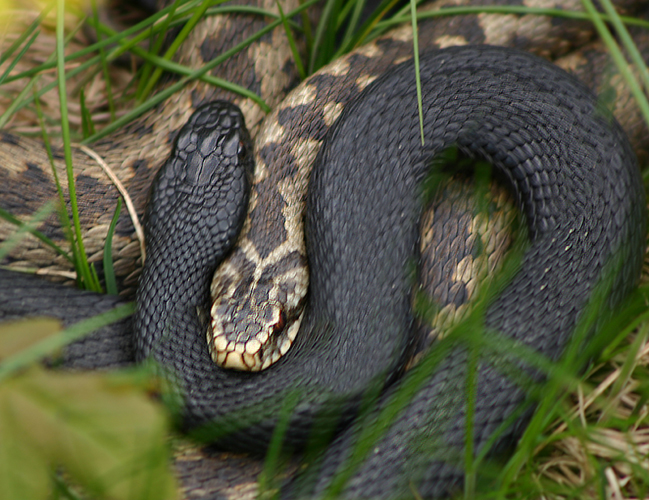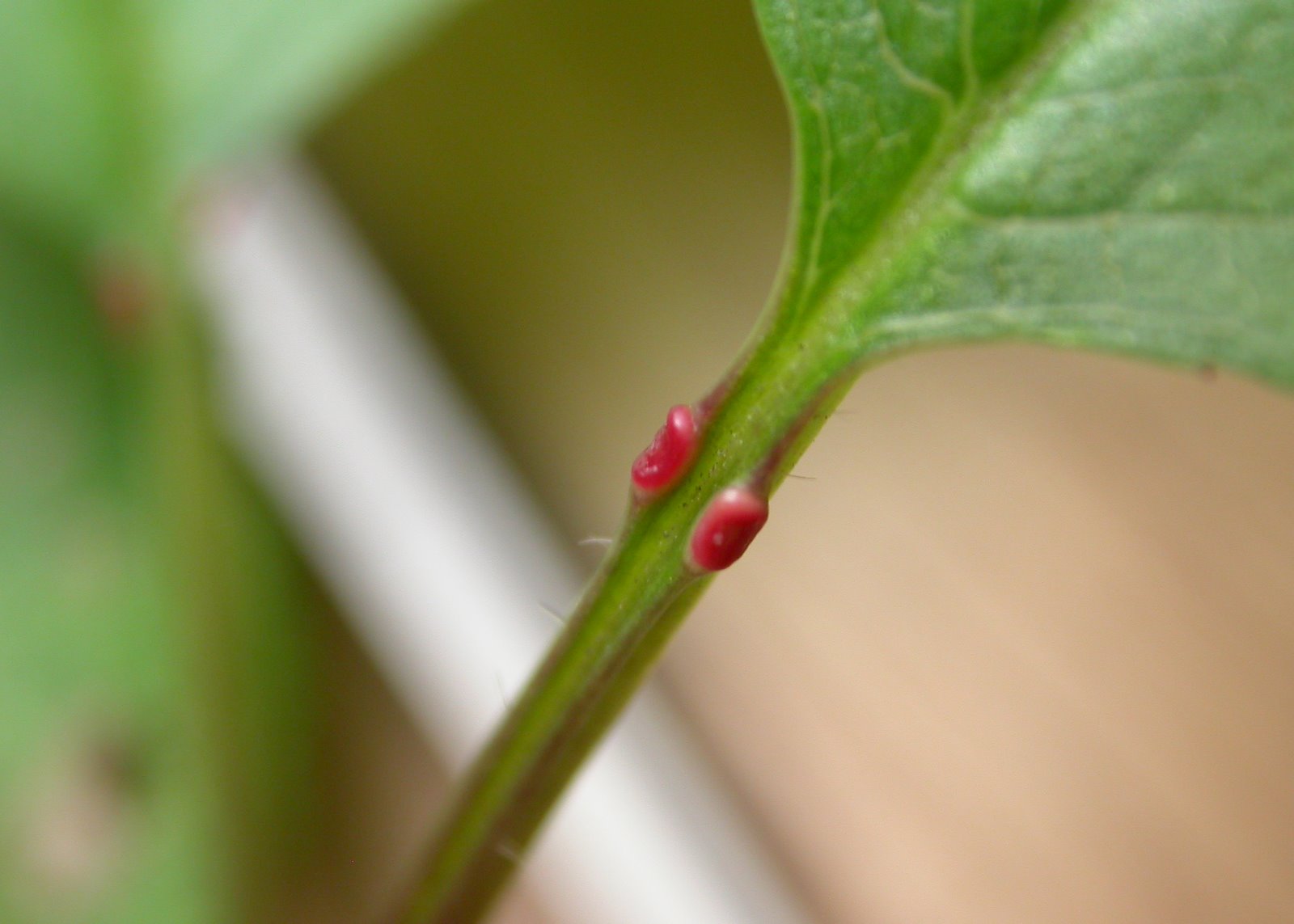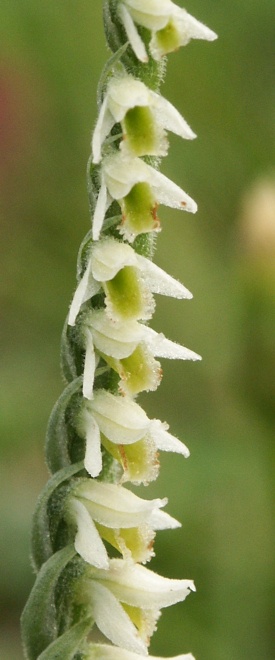|
Queendown Warren
Queendown Warren is a biological Site of Special Scientific Interest south-east of Rainham in Kent. It is a Local Nature Reserve, a Nature Conservation Review site, Grade 2, and a Special Area of Conservation. It is in the Kent Downs Area of Outstanding Natural Beauty. It is managed by the Kent Wildlife Trust, and part of it is owned by Plantlife. History The reserve covers almost and comprises several distinct sections. The original reserve, which was a rabbit warren in the Middle Ages, forms the current reserve's core. It has probably been open downland for many hundreds of years and has an internationally important community of grassland orchids. A major extension to the reserve was made in 1999 with the addition of pasture on the opposite side of the valley facing the Main Bank. This is being managed to encourage colonisation of species from the original reserve. In 2003 hectares of arable land opposite the Main Bank were added, doubling the size of the reserve. Over tim ... [...More Info...] [...Related Items...] OR: [Wikipedia] [Google] [Baidu] |
Site Of Special Scientific Interest
A Site of Special Scientific Interest (SSSI) in Great Britain, or an Area of Special Scientific Interest (ASSI) in the Isle of Man and Northern Ireland, is a conservation designation denoting a protected area in the United Kingdom and Isle of Man. SSSI/ASSIs are the basic building block of site-based nature conservation legislation and most other legal nature/geological conservation designations in the United Kingdom are based upon them, including national nature reserve (United Kingdom), national nature reserves, Ramsar Convention, Ramsar sites, Special Protection Areas, and Special Area of Conservation, Special Areas of Conservation. The acronym "SSSI" is often pronounced "triple-S I". Selection and conservation Sites notified for their Biology, biological interest are known as Biological SSSIs (or ASSIs), and those notified for geological or Physical geography, physiographic interest are Geological SSSIs (or ASSIs). Sites may be divided into management units, with some a ... [...More Info...] [...Related Items...] OR: [Wikipedia] [Google] [Baidu] |
Ophrys Apifera
''Ophrys apifera'', known in Europe as the bee orchid, is a perennial plant, perennial herbaceous plant of the genus ''Ophrys'', in the family of Orchidaceae. It serves as an example of Sexual mimicry#Interspecific deceptive mimicry, sexually deceptive pollination and floral mimicry, a highly selective and highly evolved plant–pollinator relationship. Description ''Ophrys apifera'' grows to a height of . This hardy orchid develops small rosettes of leaf, leaves in autumn that continue to grow slowly during winter. Basal leaves are ovate or oblong-lanceolate, and upper leaves and bracts are ovate-lanceolate and sheathing. Leaves exhibit parallel venation. The plant blooms from mid-April in continental Europe, but in the United Kingdom it flowers June to July. A flower spike is produced, composed from one to twelve flowers. Three large, purple sepals surround the base of the flower, which can easily be mistaken for petals. The true petals lie just above the sepals as two sho ... [...More Info...] [...Related Items...] OR: [Wikipedia] [Google] [Baidu] |
Local Nature Reserves In Kent
Local may refer to: Geography and transportation * Local (train), a train serving local traffic demand * Local, Missouri, a community in the United States Arts, entertainment, and media * ''Local'' (comics), a limited series comic book by Brian Wood and Ryan Kelly * ''Local'' (novel), a 2001 novel by Jaideep Varma * ''The Local'' (film), a 2008 action-drama film * ''The Local'', English-language news websites in several European countries Computing * .local, a network address component Mathematics * Local property, a property which occurs on ''sufficiently small'' or ''arbitrarily small'' neighborhoods of points * Local ring, type of ring in commutative algebra Other uses * Pub, a drinking establishment, known as a "local" to its regulars See also * * * Local group (other) * Locale (other) * Localism (other) * Locality (other) * Localization (other) * Locus (other) * Lokal (other) Lokal may refer t ... [...More Info...] [...Related Items...] OR: [Wikipedia] [Google] [Baidu] |
Sites Of Special Scientific Interest In Kent
Site most often refers to: * Archaeological site * Campsite, a place used for overnight stay in an outdoor area * Construction site * Location, a point or an area on the Earth's surface or elsewhere * Website, a set of related web pages, typically with a common domain name It may also refer to: * Site, a National Register of Historic Places property type * SITE (originally known as ''Sculpture in the Environment''), an American architecture and design firm * Site (mathematics), a category C together with a Grothendieck topology on C * ''The Site'', a 1990s TV series that aired on MSNBC * SITE Intelligence Group, a for-profit organization tracking jihadist and white supremacist organizations * SITE Institute, a terrorism-tracking organization, precursor to the SITE Intelligence Group * Sindh Industrial and Trading Estate, a company in Sindh, Pakistan * SITE Centers, American commercial real estate company * SITE Town, a densely populated town in Karachi, Pakistan * S.I.T.E Indust ... [...More Info...] [...Related Items...] OR: [Wikipedia] [Google] [Baidu] |
Vipera Berus
''Vipera berus'', also known as the common European adder Mallow D, Ludwig D, Nilson G (2003). ''True Vipers: Natural History and Toxinology of Old World Vipers''. Malabar, Florida: Krieger Publishing Company. . and the common European viper, Stidworthy J (1974). ''Snakes of the World''. New York: Grosset & Dunlap Inc. 160 pp. . is a species of venomous snake in the family Viperidae. The species is extremely widespread and can be found throughout much of Europe, and as far as East Asia. There are three recognised subspecies. Known by a host of common names including common adder and common viper, the adder has been the subject of much folklore in Britain and other European countries. It is not regarded as especially dangerous; the snake is not aggressive and usually bites only when really provoked, stepped on, or picked up. Bites can be very painful, but are seldom fatal. The specific name, ''berus'', is Neo-Latin and was at one time used to refer to a snake, possibly the gra ... [...More Info...] [...Related Items...] OR: [Wikipedia] [Google] [Baidu] |
Sweet Chestnut
The sweet chestnut (''Castanea sativa''), also known as the Spanish chestnut or European chestnut, is a species of tree in the family Fagaceae, native to Southern Europe and Asia Minor, and widely cultivated throughout the temperate world. A substantial, long-lived deciduous tree, it produces an edible seed, the chestnut, which has been used in cooking since ancient times. Description ''Castanea sativa'' attains a height of with a trunk often in diameter. Around 20 trees are recorded with diameters over including one in diameter at breast height. A famous ancient tree known as the Hundred Horse Chestnut in Sicily was historically recorded at in diameter (although it has split into multiple trunks above ground). The bark often has a net-shaped (retiform) pattern with deep furrows or fissures running spirally in both directions up the trunk. The trunk is mostly straight with branching starting at low heights. The oblong-lanceolate, boldly toothed leaves are long and ... [...More Info...] [...Related Items...] OR: [Wikipedia] [Google] [Baidu] |
Prunus Avium
''Prunus avium'', commonly called wild cherry, sweet cherry or gean is a species of Prunus subg. Cerasus, cherry, a flowering plant in the rose family, Rosaceae. It is native to Eurasia and naturalized elsewhere. It is an ancestor of ''Prunus cerasus, P. cerasus'' (sour cherry). All parts of the plant except for the ripe fruit are slightly toxic, containing cyanogenic glycosides. The species is often cultivated as an ornamental tree. Description ''Prunus avium'' is a deciduous tree growing to tall, with a trunk up to in diameter. Young trees show strong apical dominance with a straight trunk and symmetrical conical crown, becoming rounded to irregular on old trees. * The Bark (botany), bark is smooth reddish-brown with prominent horizontal grey-brown lenticels on young trees, becoming thick dark blackish-brown and fissured on old trees. * The leaves are alternate, simple ovoid-acute, long and broad, glabrous matt or sub-shiny green above, variably finely downy beneath, w ... [...More Info...] [...Related Items...] OR: [Wikipedia] [Google] [Baidu] |
Cephalanthera Damasonium
''Cephalanthera damasonium'', the white helleborine, is a species of orchid. It is widespread across much of Europe and Asia. ''Cephalanthera damasonium'' is the type species of the genus '' Cephalanthera''. Description ''Cephalanthera damasonium'' is a herbaceous plant, reaching a maximum height of about 60 cm. Leaves are ovate, becoming narrower higher up the stem, with parallel venation. It has white flowers which never fully open. Each shoot can carry up to 16 flowers. Across its range this species flowers May–June. It is a perennial species which tends not to spread vegetatively. This species is differentiated from the similar and closely related '' Cephalanthera longifolia'', by comparing the leaves. The rarer ''Cephalanthera longifolia'' has longer, narrower leaves. Distribution and habitat Found in shady lowland forest with little undergrowth, especially under beech trees, occasionally spreads onto chalk scrub. Can colonise new beech forest quite quickly. Require ... [...More Info...] [...Related Items...] OR: [Wikipedia] [Google] [Baidu] |
Fly Orchid
''Ophrys insectifera'', the fly orchid, is a species of orchid and the type species of the genus ''Ophrys''. It is remarkable as an example of the use of sexually deceptive pollination and floral mimicry, as well as a highly selective and highly evolved plant–pollinator relationship. Description ''Ophrys insectifera'' is a tuberous perennial, reaching in height, which flowers across its range from May to July. It is a slender plant, with narrow upright leaves. A flower spike may carry 1–10 flowers, which have yellow-green sepals, very reduced, dark brown/black petals resembling the antennae of an insect and a long, narrow, lobed labellum, which is dark in color, varying from maroon to black and on which there are two glossy depressions known as 'pseudo-eyes' as well as an iridescent blue/grey patch evolved to resemble an insect's glistening wings. There is a rare yellow-flowered form of ''O. insectifera''. Chromosomes 2n=36 Taxonomy The genus name "''Ophrys''" derives from t ... [...More Info...] [...Related Items...] OR: [Wikipedia] [Google] [Baidu] |
Adonis Blue
The Adonis blue (''Lysandra bellargus'', also known as ''Polyommatus bellargus'') is a butterfly in the family Lycaenidae. It inhabits the Palearctic realm (Western Europe, Central Europe, Southern Europe, Southern Russia, Iraq, Iran, Caucasus, Transcaucasus, and Turkey). It is found in chalk downland, in warm, sheltered spots, flying low over vegetation, seeking females that are rich chocolate brown in color. The male has brilliantly colored blue wings that give it its name. Description The male has the upper side wings a brilliant sky blue, with a fine black line round the edge and a white margin. The female is chocolate brown with a few blue scales near the base, and with orange spots, bordered by blue scales, around the edge of the hind wing. The fringes are chequered both sexes. The underside is brownish grey with black and orange crescent spots. The wingspan is about . The caterpillar reaches in length, has a dark green body with dark spines, and yellow bands along the ba ... [...More Info...] [...Related Items...] OR: [Wikipedia] [Google] [Baidu] |
Spiranthes Spiralis
''Spiranthes spiralis'', commonly known as autumn lady's-tresses, is an orchid that grows in Europe and adjacent North Africa and Asia. It is a small grey-green plant. It forms a rosette of four to five pointed, sessile, ovate leaves about in length. In late summer an unbranched stem of about tall is produced with approximately four sheath-shaped leaves. The white flowers are about long and have a green spot on the lower lip. They are arranged in a helix around the upper half of the stalk. The species is listed in Appendix II of CITES as a species that is not currently threatened with extinction but that may become so. Autumn lady's-tresses are legally protected in Belgium, UK and the Netherlands, and in some regions of France. Description Autumn lady's tresses is a polycarp, perennial, herbaceous plant that remains underground during its dormancy in summer with tubers. The species has thirty chromosomes (2n=30). Root Underground there are two to four (or exceptionally ... [...More Info...] [...Related Items...] OR: [Wikipedia] [Google] [Baidu] |
Orchis Anthropophora
''Orchis anthropophora'' (formerly ''Aceras anthropophorum''), the man orchid, is a European species of orchid whose flowers resemble a human figure. The head is formed by the petals and sepals, and the suspended torso and limbs by the lobes of the labellum. It usually grows in calcareous grassland. Description The man orchid is a herbaceous perennial, growing to a height of . A basal rosette of lanceolate leaves develops from a tuber in diameter, and between April and June a central flower spike is produced bearing up to fifty small, stemless flowers – the flowers vary from greenish, with a yellow-green labellum, to green, streaked and marked with purple. Habitat ''Orchis anthropophora'' favours moderately sunny meadows on well-drained, often calcareous soil. It is to be found around the Mediterranean area, and in central and western Europe as far north as southern England England is a Countries of the United Kingdom, country that is part of the United K ... [...More Info...] [...Related Items...] OR: [Wikipedia] [Google] [Baidu] |




